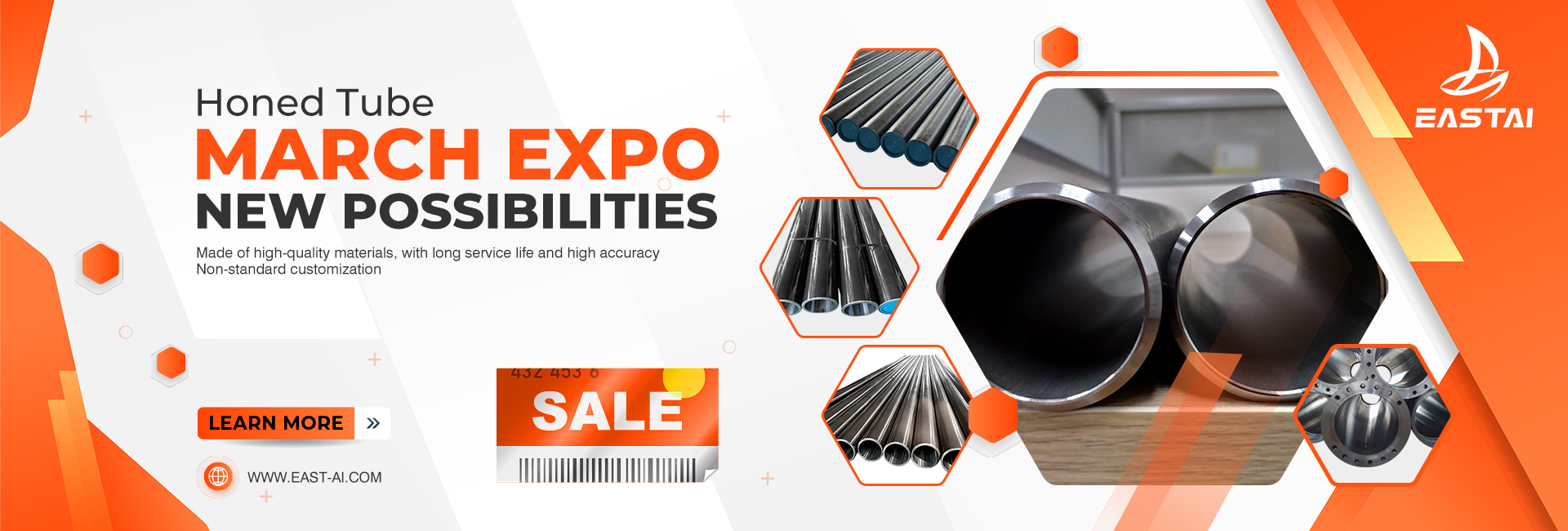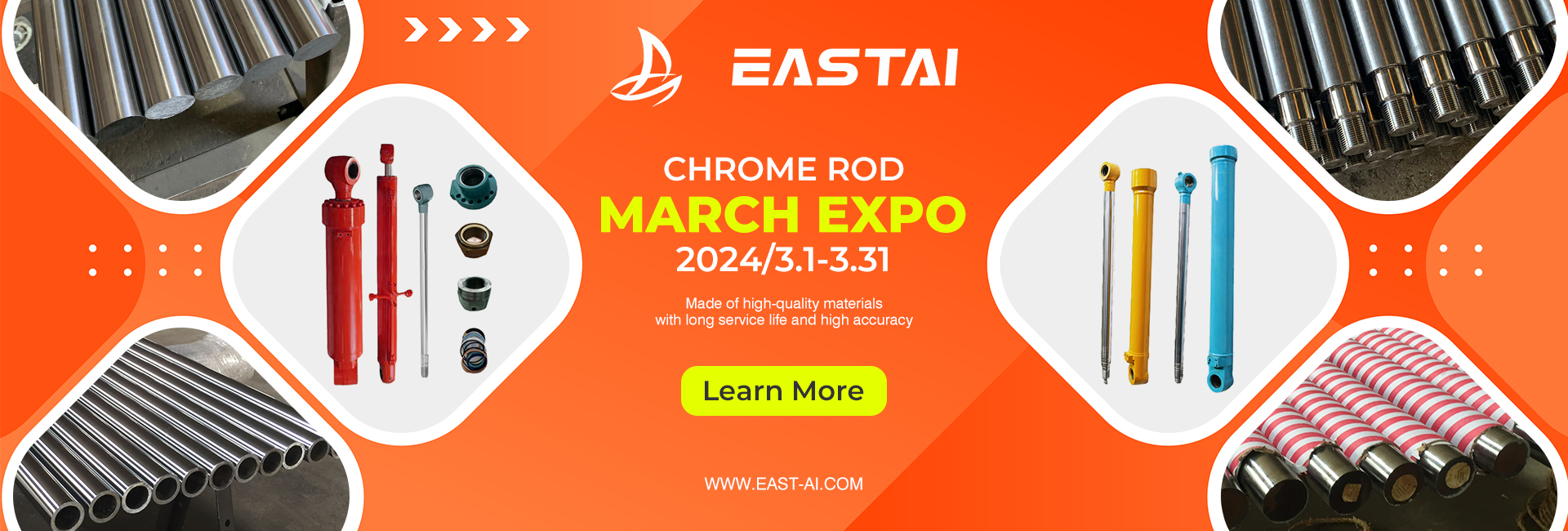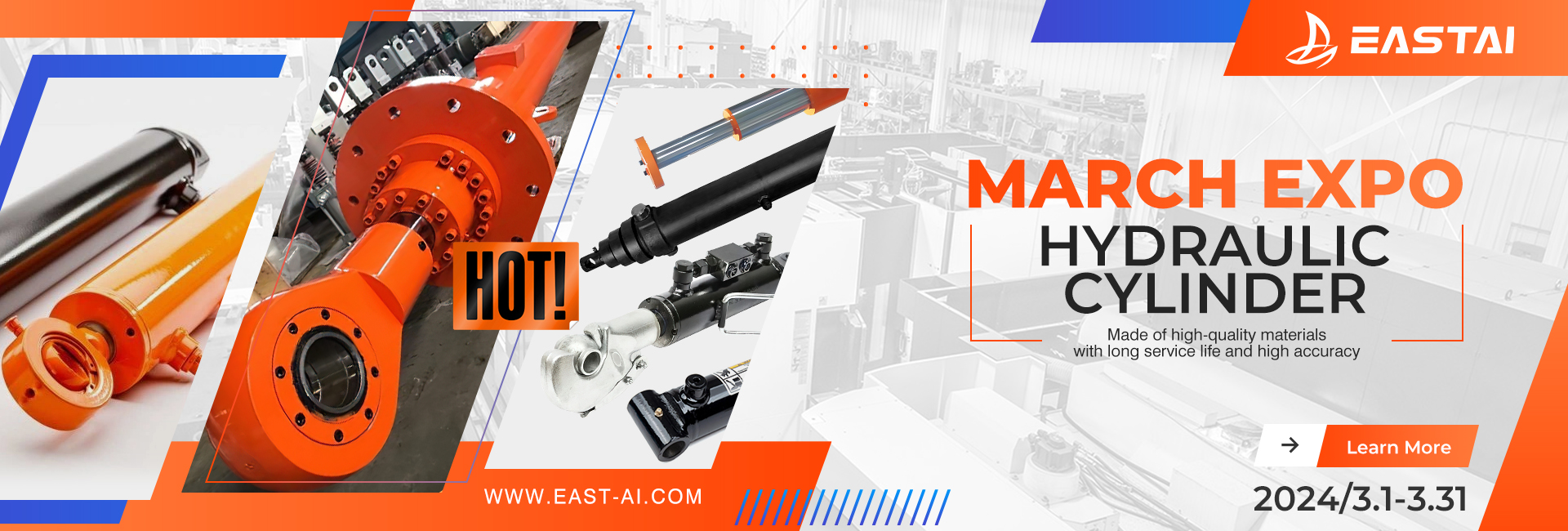Power and Versatility in Industrial Applications
Hydraulic cylinders play a pivotal role in countless industrial applications, providing immense power and versatility. These robust devices are capable of exerting tremendous force, making them indispensable in various sectors such as construction, manufacturing, and transportation. In this article, we will explore the features, functionality, applications, and benefits of 50-ton hydraulic cylinders, shedding light on their crucial role in modern industries.
1. Introduction
Hydraulic cylinders are mechanical actuators that convert hydraulic energy into linear force and motion. They consist of a cylindrical barrel, piston, piston rod, and hydraulic fluid. These devices operate based on the principles of Pascal’s law, which states that pressure exerted on a fluid is transmitted equally in all directions.
2. What is a hydraulic cylinder?
A hydraulic cylinder is a mechanical device used to generate linear force and motion through the application of hydraulic pressure. It converts the energy from pressurized fluid into mechanical work, enabling the movement of heavy loads with ease. Hydraulic cylinders are widely used in machinery, equipment, and vehicles where controlled force and motion are required.
3. How does a hydraulic cylinder work?
A hydraulic cylinder operates using the force exerted by a pressurized fluid, typically oil or hydraulic fluid. When hydraulic fluid is pumped into the cylinder, it pushes the piston, which in turn moves the piston rod. This linear motion generates the force necessary for various applications. By controlling the flow and pressure of the hydraulic fluid, the speed and force of the cylinder’s movement can be precisely regulated.
4. Components of a hydraulic cylinder
A hydraulic cylinder consists of several essential components:
a) Cylinder Barrel: The cylinder barrel serves as the outer casing of the cylinder, providing structural support and housing the other components.
b) Piston: The piston divides the cylinder into two chambers, allowing the hydraulic fluid to act on one side while sealing the other side.
c) Piston Rod: The piston rod connects the piston to the load being moved and transmits the force generated by the hydraulic fluid.
d) Seals: Seals ensure a tight and leak-free operation of the hydraulic cylinder by preventing fluid leakage between the piston and the cylinder wall.
e) Hydraulic Fluid: The hydraulic fluid, usually oil, transmits force and motion within the cylinder. It also acts as a lubricant to reduce friction and heat generated during operation.
5. Types of hydraulic cylinders
Hydraulic cylinders come in various types, each designed for specific applications:
a) Single-Acting Cylinders: Single-acting cylinders exert force in only one direction, either by pushing or pulling a load.
b) Double-Acting Cylinders: Double-acting cylinders are capable of exerting force in both directions. They use hydraulic pressure to extend and retract the piston rod.
c) Telescopic Cylinders: Telescopic cylinders consist of multiple nested stages, allowing for a longer stroke while maintaining a compact design. They are often used in applications with limited space.
d) Plunger Cylinders: Plunger cylinders feature a piston with a large diameter, providing high force output. They are commonly used in heavy-duty applications.
e) Welded Cylinders: Welded cylinders are constructed by welding the end caps and cylinder barrel together, resulting in a sturdy and durable design.
6. Applications of hydraulic cylinders
The versatility of hydraulic cylinders makes them suitable for a wide range of applications:
a) Construction Equipment: Hydraulic cylinders are extensively used in construction machinery such as excavators, bulldozers, and cranes. They provide the power needed for lifting, digging, and moving heavy materials.
b) Manufacturing Machinery: Hydraulic cylinders play a crucial role in manufacturing processes, including injection molding machines, metal forming equipment, and assembly line automation. They enable precise and controlled movements required for efficient production.
c) Agricultural Machinery: Hydraulic cylinders are vital components in agricultural equipment like tractors, harvesters, and irrigation systems. They facilitate tasks such as lifting, lowering, and tilting implements for optimal farming operations.
d) Transportation and Mobile Equipment: Hydraulic cylinders are integral to the operation of vehicles and mobile equipment, including hydraulic presses, forklifts, dump trucks, and cranes. They enable efficient material handling, steering, and lifting capabilities.
e) Civil Engineering and Infrastructure: Hydraulic cylinders are employed in various civil engineering projects such as bridges, dams, and locks. They provide the necessary force for heavy lifting, positioning, and stabilization during construction.
7. Advantages of hydraulic cylinders
Hydraulic cylinders offer several advantages over other actuation systems:
a) High Force Output: Hydraulic cylinders can generate substantial force, making them ideal for applications that require lifting, pushing, or pulling heavy loads.
b) Precise Control: By regulating the flow and pressure of hydraulic fluid, the movement and speed of hydraulic cylinders can be precisely controlled, allowing for accurate positioning and motion control.
c) Versatility: Hydraulic cylinders can be customized to suit various applications, with options for different sizes, stroke lengths, mounting styles, and force capacities.
d) Compact Design: Hydraulic cylinders can deliver significant force while maintaining a compact form factor, allowing them to fit into tight spaces.
e) Durability and Reliability: Hydraulic cylinders are built to withstand harsh environments and heavy use, ensuring long-term durability and reliable performance.
8. Factors to consider when choosing a hydraulic cylinder
When selecting a hydraulic cylinder for a specific application, several factors should be considered:
a) Load Capacity: Determine the maximum load that the hydraulic cylinder needs to handle to ensure it can exert sufficient force.
b) Stroke Length: Consider the required stroke length, which is the distance the cylinder needs to extend or retract.
c) Operating Pressure: Assess the operating pressure required for the application and choose a cylinder that can handle that pressure safely.
d) Mounting Style: Select a mounting style that suits the application, such as front flange, rear pivot, or side lug mounts.
e) Environmental Conditions: Consider the environmental conditions in which the cylinder will operate, including temperature, moisture, and exposure to chemicals or contaminants.
9. Maintenance and care of hydraulic cylinders
To ensure the optimal performance and longevity of hydraulic cylinders, regular maintenance is essential:
a) Inspections: Regularly inspect the hydraulic cylinder for signs of wear, leakage, or damage. Replace any worn-out seals or components promptly.
b) Lubrication: Properly lubricate the hydraulic cylinder using the recommended hydraulic fluid or oil. This minimizes friction and reduces the risk of overheating.
c) Cleaning: Keep the hydraulic cylinder clean and free from dirt, debris, or contaminants that may affect its operation. Use appropriate cleaning methods and avoid using abrasive materials.
d) Preventive Maintenance: Implement a preventive maintenance schedule to address potential issues before they become major problems. This may include checking and tightening connections, inspecting hoses and fittings, and ensuring proper fluid levels.
e) Training and Operator Awareness: Provide training to operators on the proper use and maintenance of hydraulic cylinders. Emphasize the importance of following safety guidelines and reporting any abnormalities or malfunctions promptly.
10. Common issues and troubleshooting
While hydraulic cylinders are robust and reliable, occasional issues may arise. Here are some common problems and troubleshooting steps:
a) Leakage: If there is fluid leakage from the cylinder, inspect the seals and replace any damaged or worn-out seals. Check for loose connections and ensure proper tightening.
b) Slow or Erratic Movement: If the cylinder exhibits slow or erratic movement, check for low fluid levels or clogged filters. Clean or replace filters and ensure the hydraulic fluid is at the appropriate level.
c) Excessive Heat: Excessive heat in the hydraulic cylinder can indicate a problem with fluid levels, contamination, or system overload. Check fluid levels, inspect for contamination, and ensure the cylinder is not overloaded.
d) Irregular Noise or Vibrations: Unusual noise or vibrations may indicate loose components or worn-out parts. Inspect and tighten connections, and replace any damaged or worn-out components.
e) Uneven Wear: If there is uneven wear on the cylinder rod or other components, it may indicate misalignment or an issue with the mounting. Check for proper alignment and make any necessary adjustments.
11. Safety precautions when using hydraulic cylinders
Working with hydraulic cylinders involves potential risks. To ensure the safety of personnel and equipment, follow these safety precautions:
a) Proper Training: Provide comprehensive training to operators on the safe operation, maintenance, and troubleshooting of hydraulic cylinders.
b) Personal Protective Equipment (PPE): Ensure operators wear appropriate PPE, including gloves, safety glasses, and protective clothing, to protect against potential hazards.
c) Load Capacity and Limits: Adhere to the recommended load capacity and limits specified by the manufacturer. Overloading the cylinder can lead to equipment failure and accidents.
d) Secure Mounting: Properly mount the hydraulic cylinder to prevent movement or dislodgment during operation.
e) Regular Inspections: Conduct regular inspections to identify any potential issues or signs of wear. Address problems promptly to prevent accidents or system failure.
12. Hydraulic cylinder manufacturers and brands
There are several reputable manufacturers and brands that produce high-quality hydraulic cylinders. Some well-known names in the industry include:
a) Bosch Rexroth: Bosch Rexroth is a globally recognized manufacturer of hydraulic cylinders, offering a wide range of products for various applications.
b) Parker Hannifin: Parker Hannifin is a leading manufacturer of motion and control technologies, including hydraulic cylinders renowned for their performance and reliability.
c) Eaton: Eaton is a trusted brand in the hydraulic industry, providing a diverse range of hydraulic cylinders designed for different sectors and applications.
d) Hydac: Hydac specializes in hydraulic components and systems, including hydraulic cylinders known for their precision and durability.
e) Wipro Infrastructure Engineering: Wipro Infrastructure Engineering offers high-quality hydraulic cylinders for industrial and mobile applications, catering to diverse customer needs.
13. Pricing and purchasing considerations
The cost of hydraulic cylinders can vary depending on factors such as size, capacity, and brand. It’s important to consider the following when purchasing:
a) Quality and Reliability: Choose a reputable brand known for manufacturing reliable and durable hydraulic cylinders, even if it means a slightly higher initial investment.
b) Application Requirements: Ensure the hydraulic cylinder you select meets the specific requirements of your application in terms of load capacity, stroke length, and operating conditions.
c) Warranty and Support: Check the warranty and after-sales support offered by the manufacturer to ensure prompt assistance in case of any issues or concerns.
d) Price Comparison: Compare prices from different suppliers and manufacturers to get a competitive deal without compromising on quality.
e) Long-Term Costs: Consider the long-term maintenance and operational costs associated with the hydraulic cylinder, including maintenance, replacement parts, and fluid changes.
14. Case studies and success stories
To understand the practical applications and benefits of 50-ton hydraulic cylinders, let’s explore a couple of case studies:
a) Construction Project: In a large-scale construction project, 50-ton hydraulic cylinders were utilized in a crane to lift heavy loads effortlessly. The precise control and immense power of the cylinders significantly increased productivity and reduced the time required for lifting operations.
b) Manufacturing Facility: In an automotive manufacturing facility, 50-ton hydraulic cylinders were integrated into assembly line equipment for pressing and forming metal components. The cylinders’ strength and accuracy ensured precise shaping and reliable performance, resulting in high-quality finished products.
50-ton hydraulic cylinders are indispensable components in various industrial sectors, providing immense power, control, and versatility. From construction and manufacturing to agriculture and transportation, these cylinders play a vital role in facilitating heavy lifting, controlled motion, and efficient operations. By understanding their functionality, maintenance requirements, and safety considerations, industries can harness the potential of hydraulic cylinders to enhance productivity and achieve superior results in their operations.
Post time: Jul-10-2023




